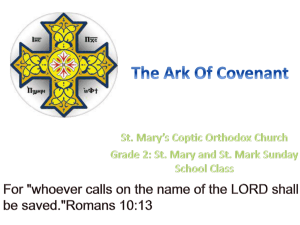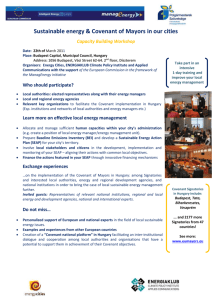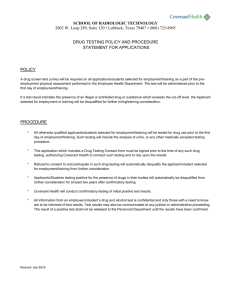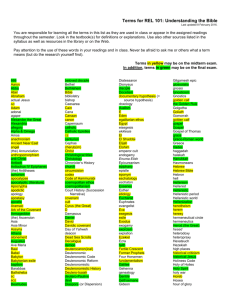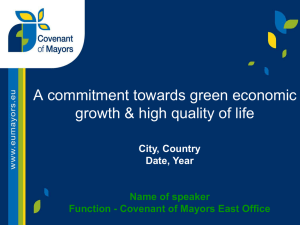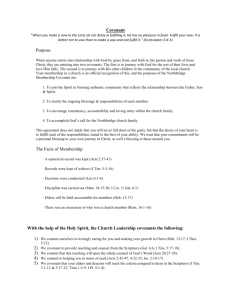Covenant of Mayors
advertisement
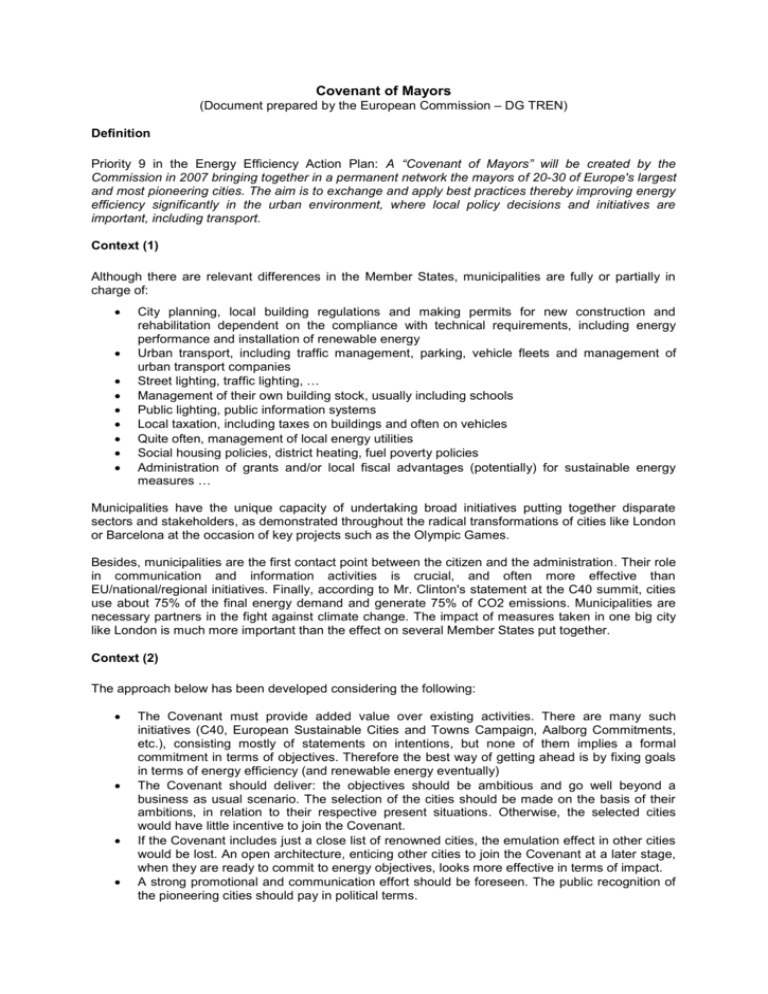
Covenant of Mayors (Document prepared by the European Commission – DG TREN) Definition Priority 9 in the Energy Efficiency Action Plan: A “Covenant of Mayors” will be created by the Commission in 2007 bringing together in a permanent network the mayors of 20-30 of Europe's largest and most pioneering cities. The aim is to exchange and apply best practices thereby improving energy efficiency significantly in the urban environment, where local policy decisions and initiatives are important, including transport. Context (1) Although there are relevant differences in the Member States, municipalities are fully or partially in charge of: City planning, local building regulations and making permits for new construction and rehabilitation dependent on the compliance with technical requirements, including energy performance and installation of renewable energy Urban transport, including traffic management, parking, vehicle fleets and management of urban transport companies Street lighting, traffic lighting, … Management of their own building stock, usually including schools Public lighting, public information systems Local taxation, including taxes on buildings and often on vehicles Quite often, management of local energy utilities Social housing policies, district heating, fuel poverty policies Administration of grants and/or local fiscal advantages (potentially) for sustainable energy measures … Municipalities have the unique capacity of undertaking broad initiatives putting together disparate sectors and stakeholders, as demonstrated throughout the radical transformations of cities like London or Barcelona at the occasion of key projects such as the Olympic Games. Besides, municipalities are the first contact point between the citizen and the administration. Their role in communication and information activities is crucial, and often more effective than EU/national/regional initiatives. Finally, according to Mr. Clinton's statement at the C40 summit, cities use about 75% of the final energy demand and generate 75% of CO2 emissions. Municipalities are necessary partners in the fight against climate change. The impact of measures taken in one big city like London is much more important than the effect on several Member States put together. Context (2) The approach below has been developed considering the following: The Covenant must provide added value over existing activities. There are many such initiatives (C40, European Sustainable Cities and Towns Campaign, Aalborg Commitments, etc.), consisting mostly of statements on intentions, but none of them implies a formal commitment in terms of objectives. Therefore the best way of getting ahead is by fixing goals in terms of energy efficiency (and renewable energy eventually) The Covenant should deliver: the objectives should be ambitious and go well beyond a business as usual scenario. The selection of the cities should be made on the basis of their ambitions, in relation to their respective present situations. Otherwise, the selected cities would have little incentive to join the Covenant. If the Covenant includes just a close list of renowned cities, the emulation effect in other cities would be lost. An open architecture, enticing other cities to join the Covenant at a later stage, when they are ready to commit to energy objectives, looks more effective in terms of impact. A strong promotional and communication effort should be foreseen. The public recognition of the pioneering cities should pay in political terms. We should work step by step, exploring first what are the actual expectations of mayors and how far we could meet their expectations with reasonable resources allocation. Proposed definition At term, the Mayors of a number of cities should commit, within the scope of their competence, to meet or exceed certain energy objectives, related to the Energy for a Changing World package: increasing their energy efficiency by 20% or more, having a relevant share of RES in the local energy mix, reduction of CO2 emissions as a consequence of both by at least 20% (30% if relevant third countries go for CO2 limits). They also commit to help each other by exchanging good practice. The precise definition of such objectives is to be done after holding discussions with interested cities and networks of cities, according to the planning below. The Mayors also express their willingness to spread the message to other cities and invite them to join the Covenant at any time, providing that the other cities are willing to commit to the Covenant framework. The Commission recognises their role as pioneering cities setting the way for a sustainable energy landscape in Europe and provides support to the Covenant, mostly for networking, co-ordination, upfollowing progress, setting up benchmarking mechanisms and promotion of the Covenant, through the Intelligent Energy Europe Programme (Sustainable Energy Europe Campaign). The Covenant of Mayors would include a number of Annexes providing examples of best practice. Those annexes would be Concerto (the benchmark for newly constructed and rehabilitated urban areas), Civitas (for clean urban transport), ManagEnergy (for local energy expert teams and for energy education), and possibly others. Those initiatives would from that moment on liaise closely with the Covenant cities, so killing two birds with one shot: accomplishing their vocation to disseminate successful technologies and methodologies and offering a service to the Covenant cities. Resources This approach relies on the voluntary commitment of the cities and networks of cities to provide most of the input. However, the Covenant can work only if the Commission provides: liaison with EU policy developments technical and financial support to track progress and implementation of the proposed measures, to facilitate promotion, to help negotiating external financial support and to facilitate networking.


